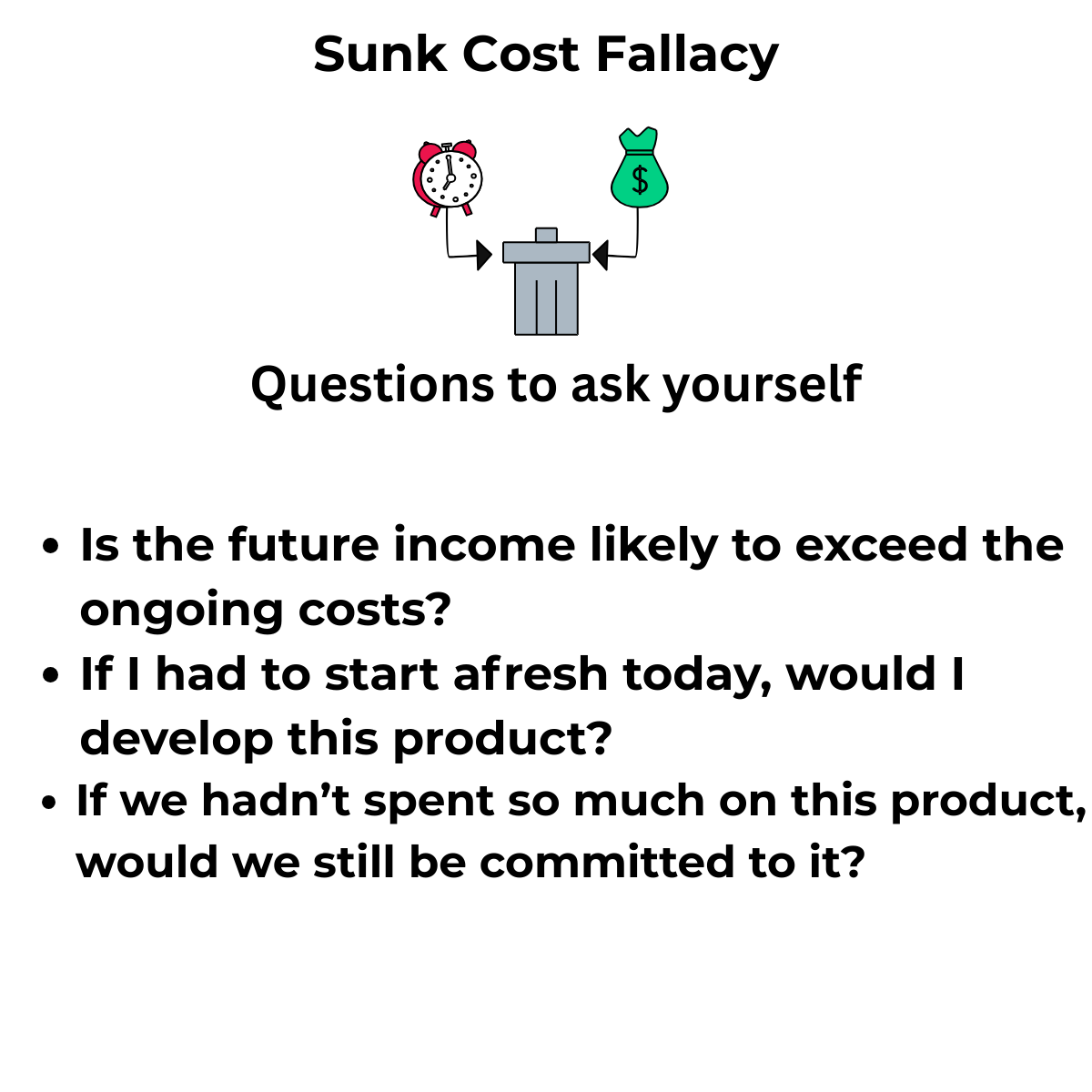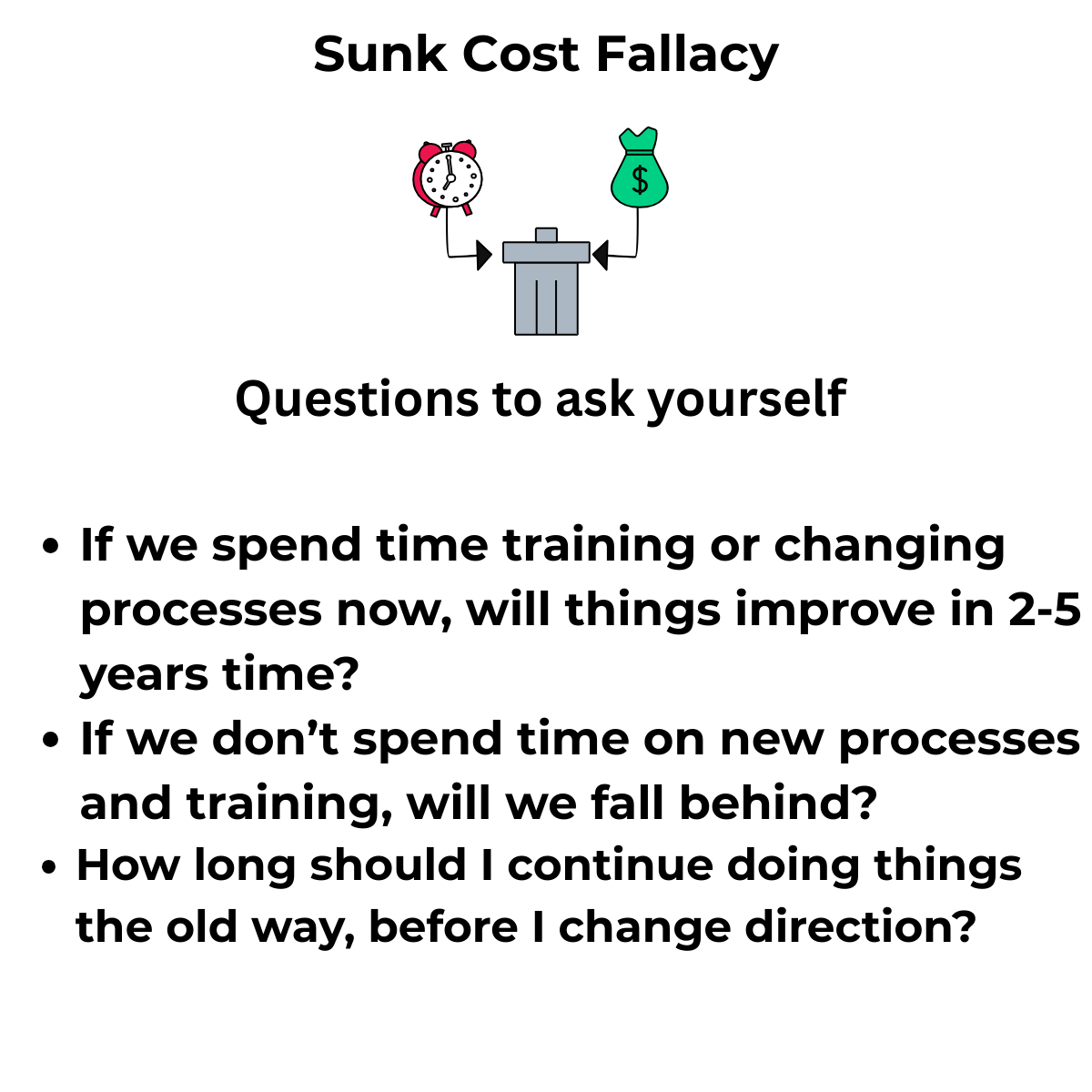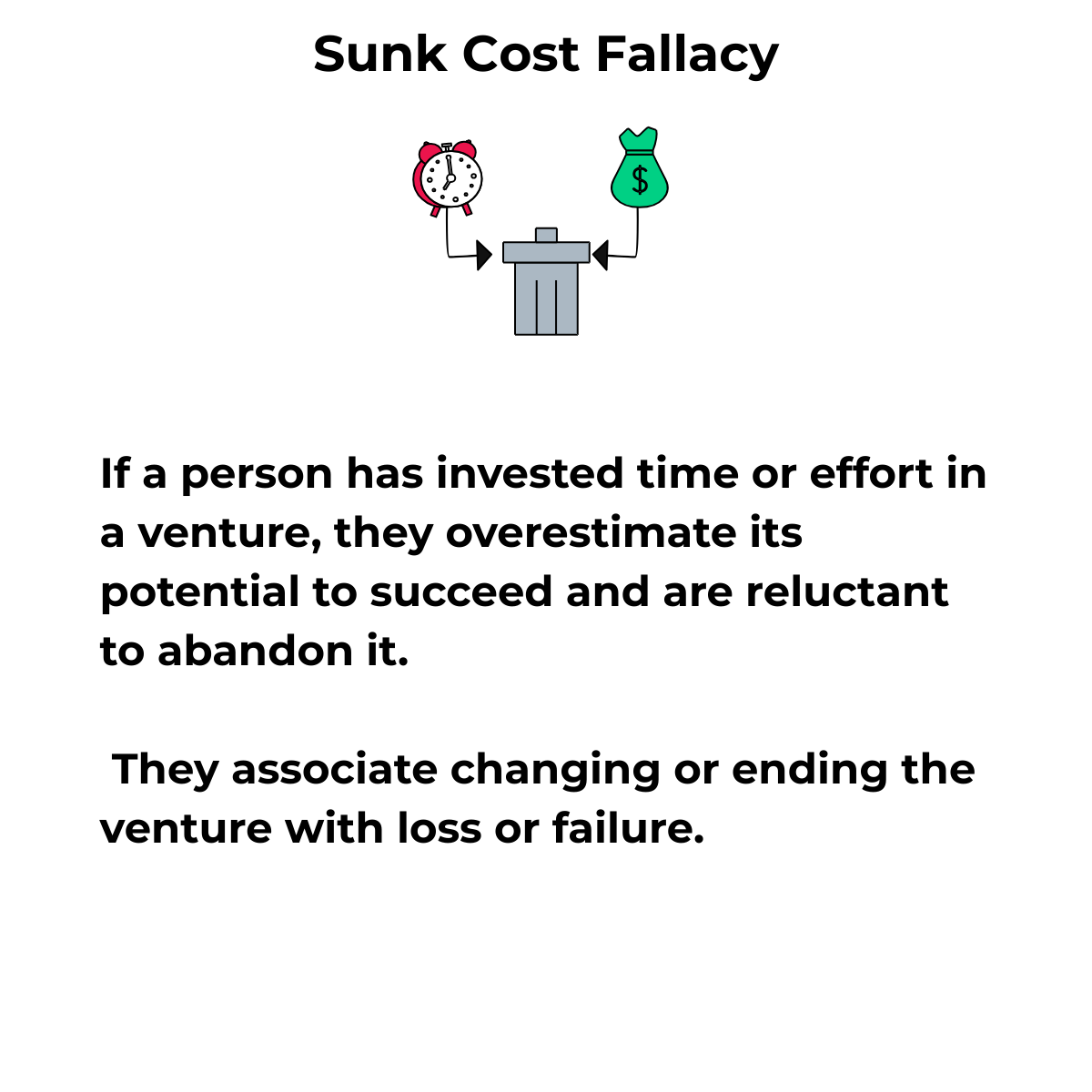
As humans, we often fool ourselves. If we are aware of thinking traps, we are less likely to fall into them.
A common thinking trap is the "Sunk Cost Fallacy". We can fall for this in business as well as our personal lives.
⏰ If a person has invested time or effort in a venture, they overestimate its potential to succeed and are reluctant to abandon it.
⚠️ They associate changing or ending the venture with loss or failure.

📊 Example - Personal Investments
💵 An investor buys a share for $1000.
📉 The share value drops to $500 but the investor doesn’t want to lose money and holds on to it, hoping that price rises.
❌ The price falls to $100 and he loses more money.
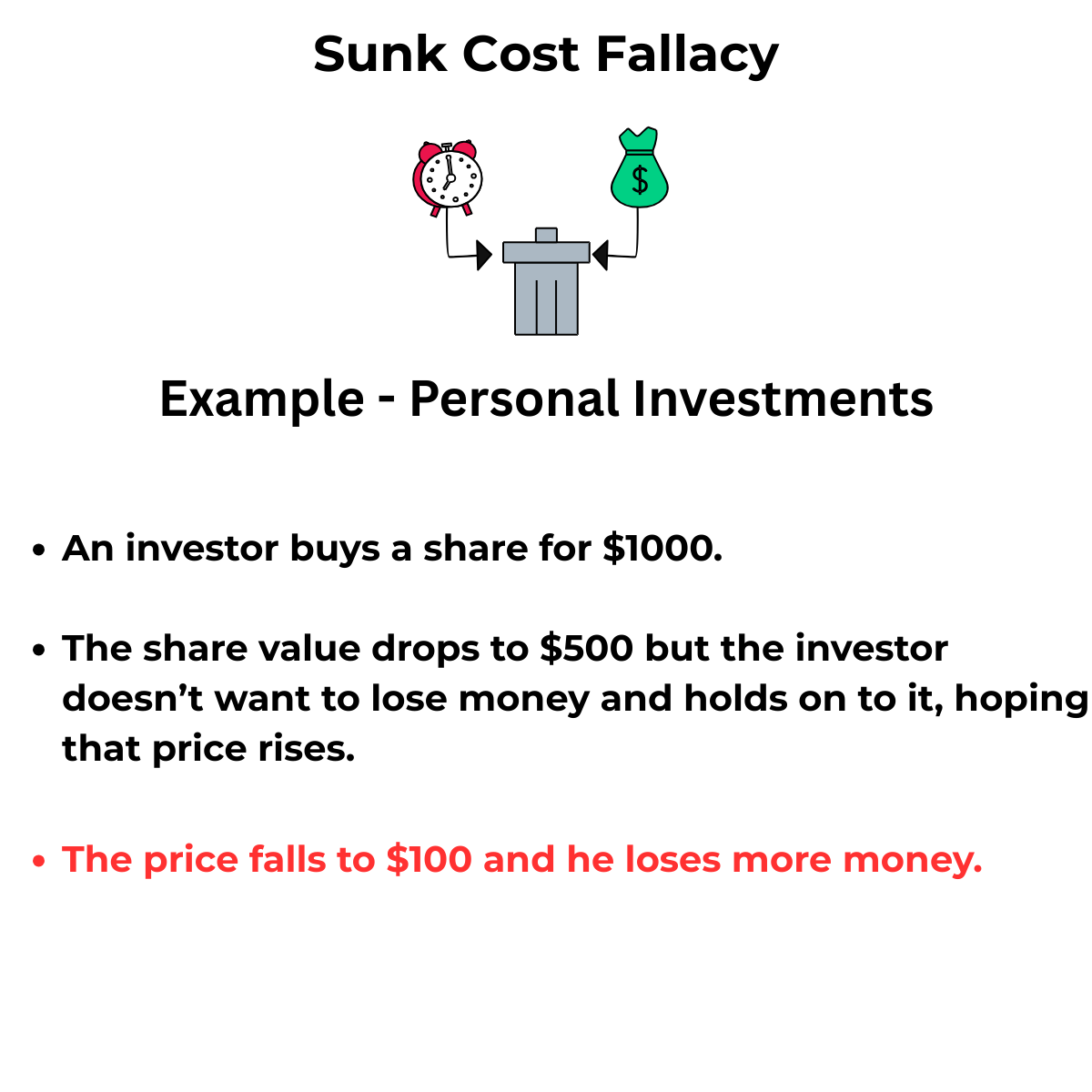
📦 Example - New Products
🏭 A company invests $1M in a new product and marketing. It doesn’t sell - the company has lost $1M to this point.
💼 The company doesn’t want to regard the costs as a write off. It argues that it has invested $1M and needs to show a return on investment.
📢 It invests a further $1M in rebranding and marketing.
❌ The product continues to fail and a total of $2M is lost.
🔄 The sunk cost argument makes companies double down on existing efforts, when they should rather change direction.
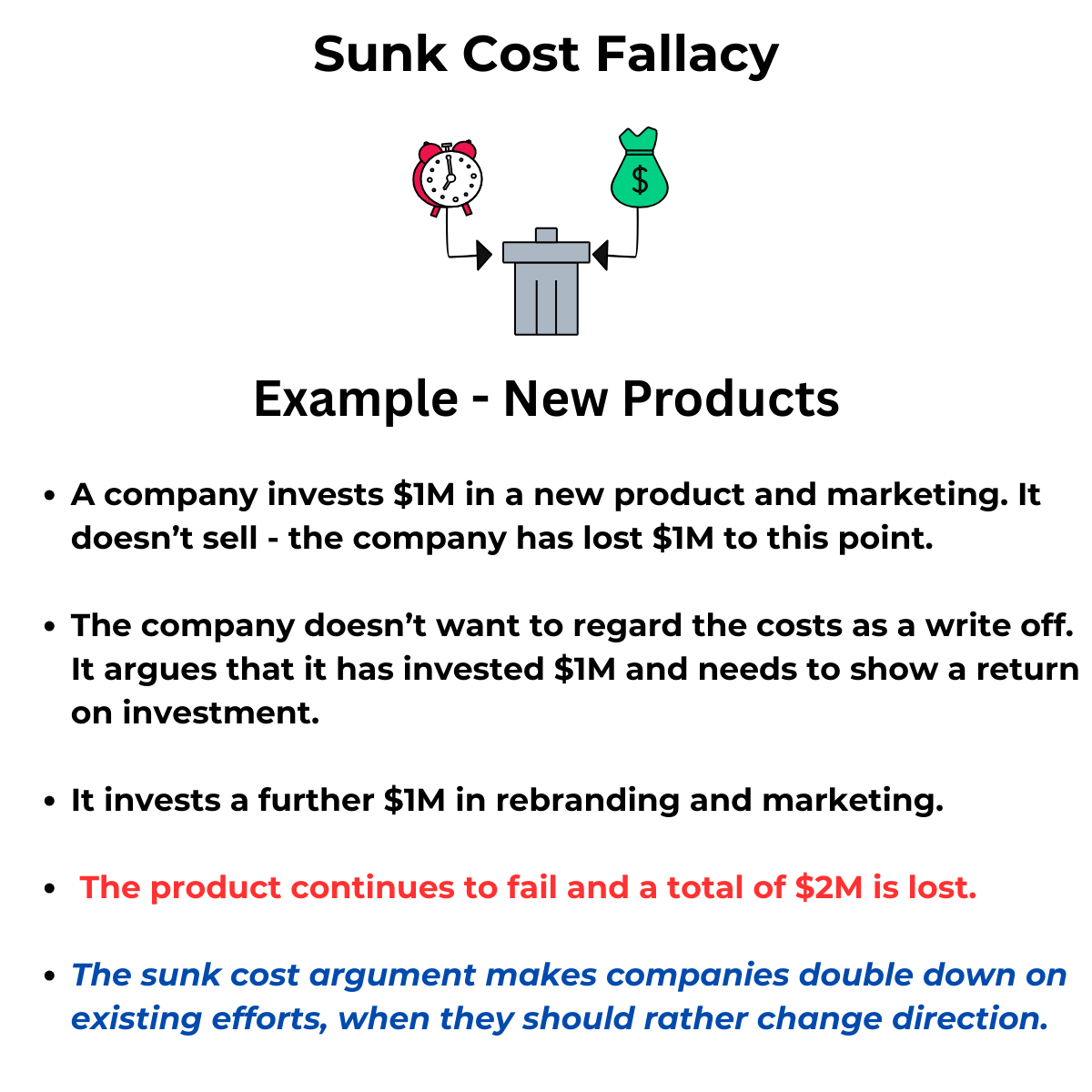
⏳ Example - Company Time Invested
🏢 A company invests several years in developing a process and training staff in the process. The process works well.
⚡ 5 years later, competitors are using new technology and processes that are faster.
🧑💻 People in the company feel that if they change processes, they will have wasted time spent on the old processes.
❌ The company doesn’t change and starts to fall behind.
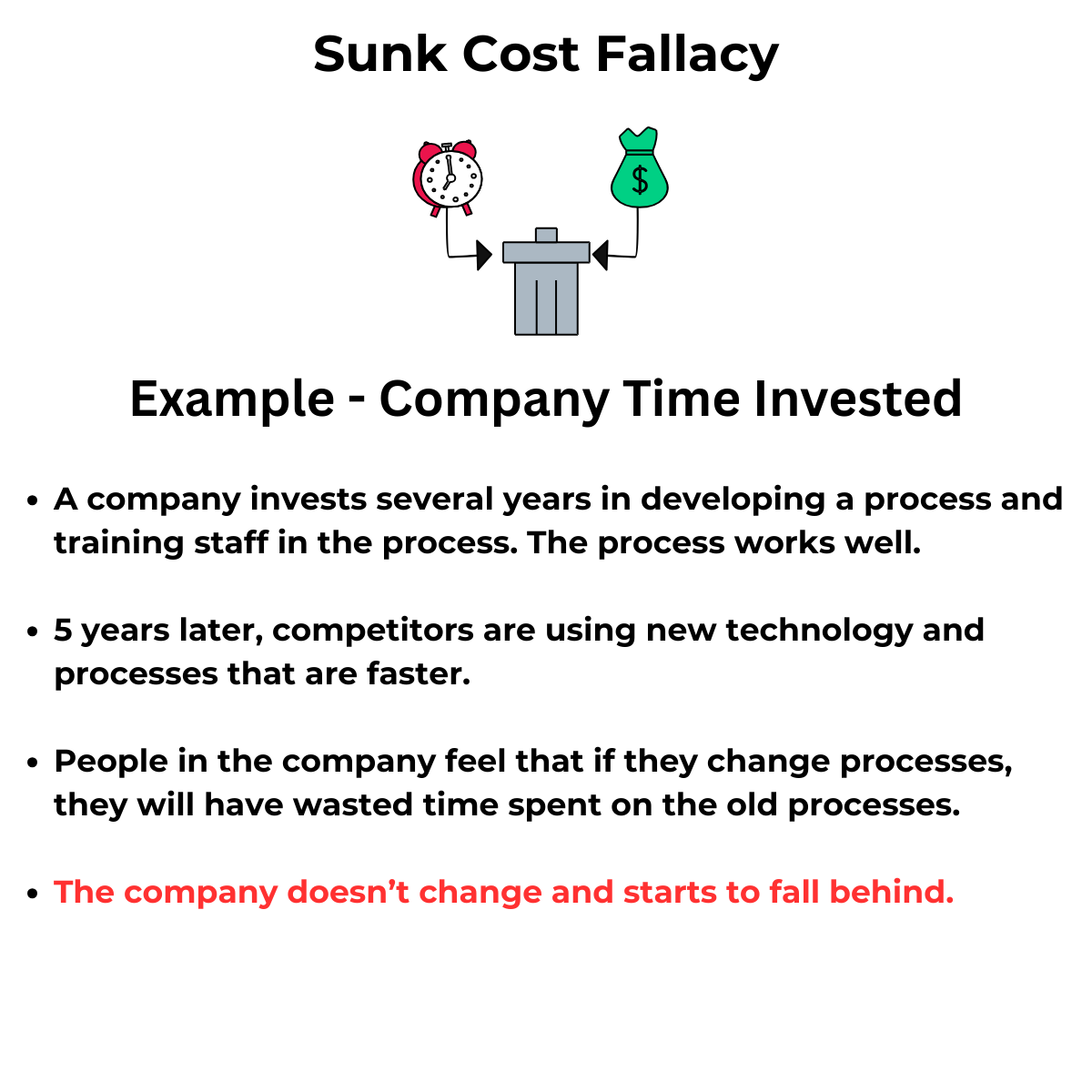
👤 Example - Personal Time Invested
🎓 Bob spends several years training and gets a job in product design. Due to changes in the market, the division is closed.
🏢 The company offers to retrain Bob in product sales and support.
🤔 Bob feels that if he changes job, he will have wasted time spent on being a designer.
❌ Bob doesn’t change direction and struggles to find work in product design.
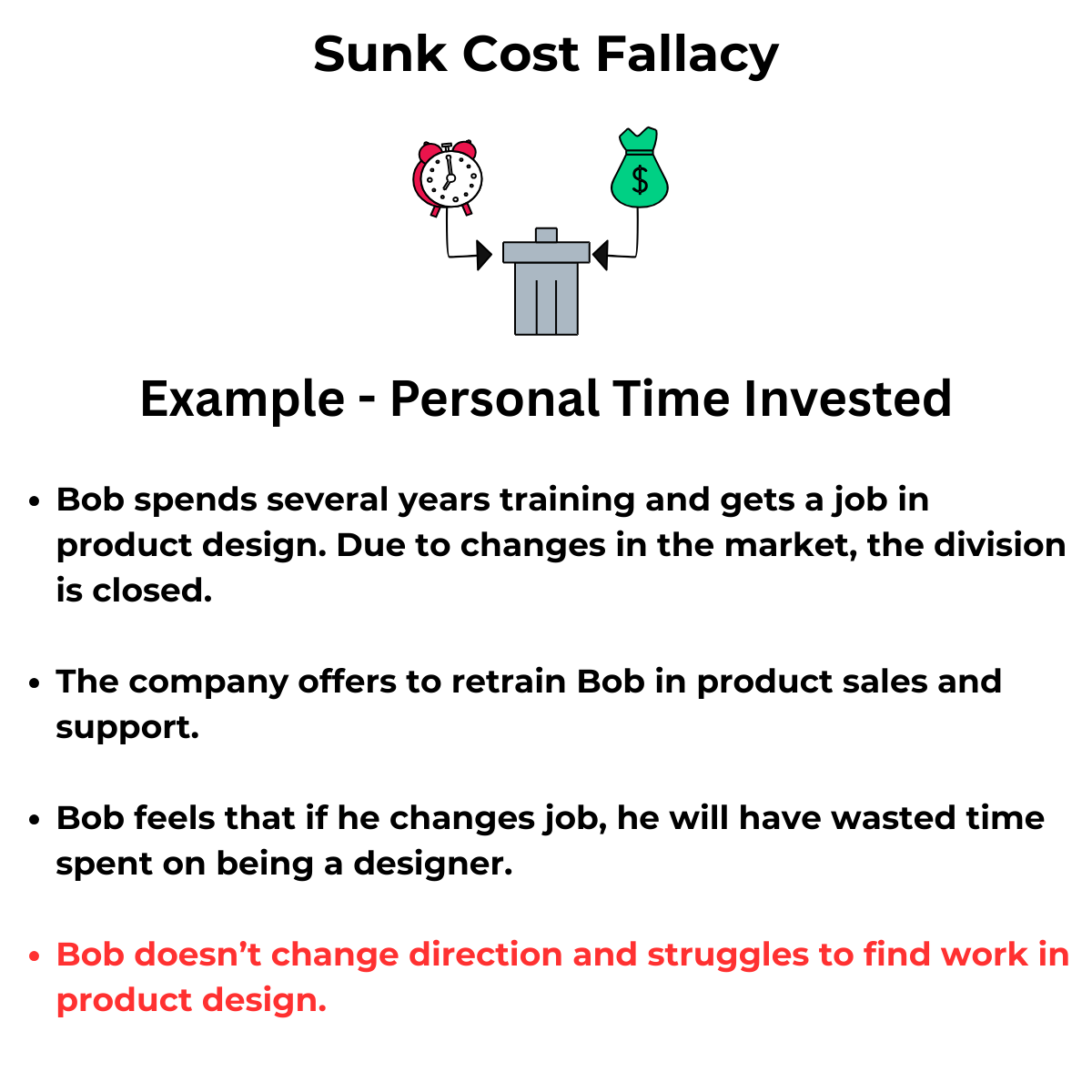
📈 Is the future income likely to exceed the ongoing costs?
🔄 If I had to start afresh today, would I develop this product?
💭 If we hadn’t spent so much on this product, would we still be committed to it?
📚 If we spend time training or changing processes now, will things improve in 2-5 years time?
⚠️ If we don’t spend time on new processes and training, will we fall behind?
⏱️ How long should I continue doing things the old way, before I change direction?
